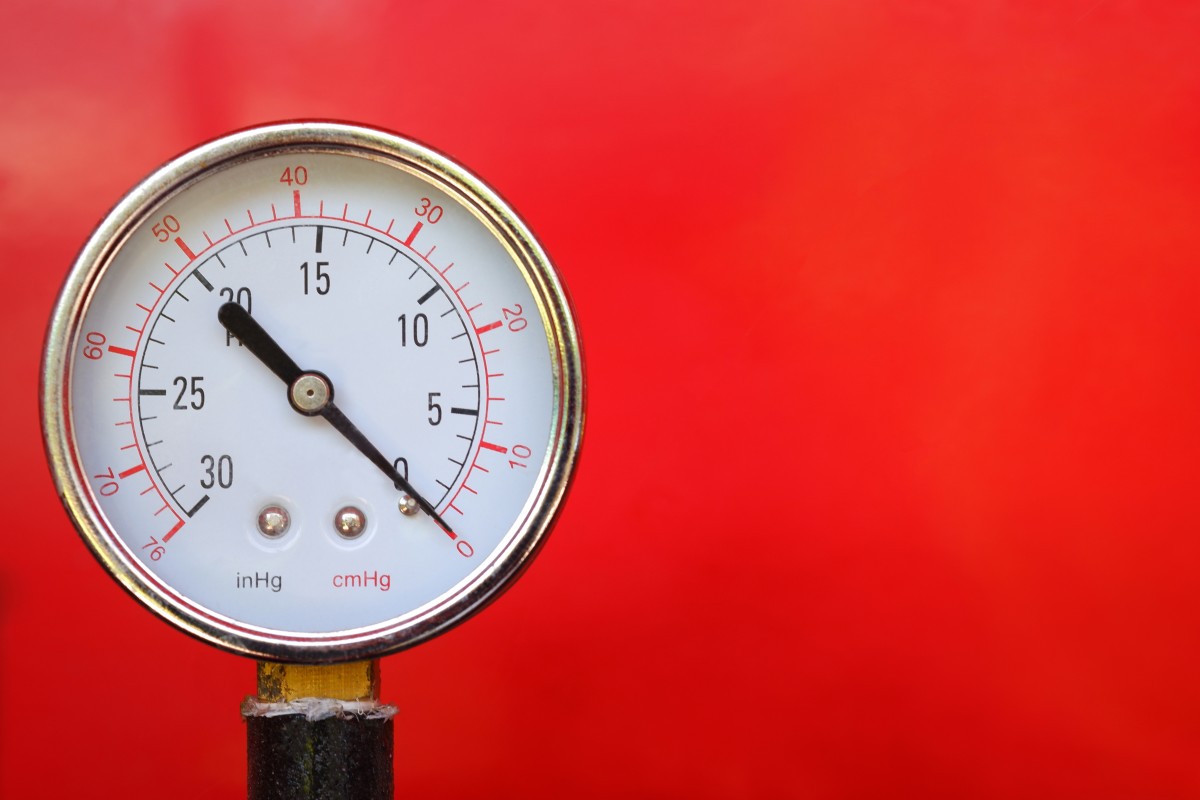How Does Water Pressure and Flow Work?

It’s all due to water pressure and flow that you are able to turn on your kitchen faucet and wash your hands. The revolution of indoor plumbing has made water pressure a necessity for a majority of the world. Imagine living without a working faucet in your bathrooms, kitchens, or anywhere else!
Even though these are essential parts of everyday life, it may never cross your mind how water pressure works, or even how to detect low water pressure in houses. Curious about how water pressure compares with water flow and how they operate in your daily life? Even if you’re not, the next time you turn on the faucet to nothing but a trickle of water, understanding water pressure will help you figure out what’s going on.
Definition of Water Pressure
Water pressure is described as the force or strength that is used to push water through pipes or other pathways and is created by altitude or height. For example, almost every single city has a water tower, which is typically located high on a hill. This water tower is a large tank that holds the city’s water supply. The height of the tank will determine the amount of pressure that the supply of water will have.
Water pressure is also often affected by gravitational pull. Water is much denser than air, so the water is affected even more by small height differences.
Definition of Water Flow
The amount of water passing through a pipe at any given time is described as water flow. The flow of water can be affected by the width of a supply pipe. If many appliances or houses were to receive their water from a supply pipe with a small width, the flow rate would be lower than if the pipe were a wider width. So, if many taps or appliances were all open at the exact same time, there would not be an adequate amount of water available for them. This would result in low flow.
The flow of water from your faucet is determined by water pressure. The more water that is being forced through a pipe, the more pressure there will naturally be. Through any pipe size, higher water pressure will cause greater water flow. The pressure will decrease downstream, however, because of loss of friction and water velocity increase.
Similarities & Differences Between Water Pressure and Water Flow
It must be stated that water pressure and water flow are NOT the same thing. An easy way to describe it would be, water flow is how MUCH water flows down a faucet, and water pressure is how HARD the water falls down the faucet.
Both water pressure and water flow are related to friction. Friction will slow down water as it moves through a pipe, depending on the pipe’s texture and diameter. If the water pressure is sufficient, the smoother the pipe, the less friction there is and the faster the water slides through. If there is efficient water flow, the friction in smaller pipes may be subdued so the flow stays high.
Generally, the larger a pipe is, the higher the water flow. The water pressure level always has to be taken into consideration, however. Even the biggest, smoothest pipes will not have effective water flow if the water pressure is low, because there is not enough strength to defeat the force of friction.
To change water flow, the opening of a pipe must be adjusted. Changing water pressure is different. To adjust pressure, the diameter or texture of the pipe must be altered using a different regulator/pump or regulator/pump setting. The water pressure can also be adapted by changing the amount of water that is raised above the water that is coming through the water line.
Common Problems with Water Pressure
If your shower’s water pressure is so weak you feel like barely nothing is coming out, or if your kitchen sink lets out only a few droplets of water, then you have a water pressure problem. There are multiple reasons why you could be facing issues with water pressure, but here are a few:
Clogged Drains
Clogs or drain obstructions are the most likely culprits for causing low water pressure in your pipes. Serious clogs need more than a simple DIY fix and will require the expertise of a professional plumber.
Closed Water Meter or House Shutoff Valve
If the water meter or house shutoff valves aren’t fully open, then the water flow will be compromised. Both of these valves control water flow, so make sure both of them are fully open.
Failing Water Pressure Regulator
Your water pressure regulator manages the input pressure of your plumbing system to keep it at a safe level to prevent any damage to your pipes. If your water pressure regulator is failing, it can cause either spiked or low water pressure, which can affect your entire property.
Issues with Pipes
If none of the above are to blame for your low water pressure, then the problem may lie with your pipes. If you have old steel pipes, it’s likely that you have mineral buildup inside that is restricting water flow. Or, you may have a leak issue. Any water escaping your pipes doesn’t reach your sink or showerhead – leaving you with less water. A video drain inspection from a plumbing service can help find the source of the leaks.
Do you need a professional plumber to fix your low water pressure problems? Express Sewer & Drain has years of experience and can deal with any plumbing issue you have. So, when you are in need of a professional, don’t hesitate and contact us. We are here for you 24/7!
This post first appeared on https://www.expresssewer.com
